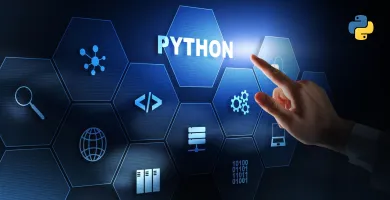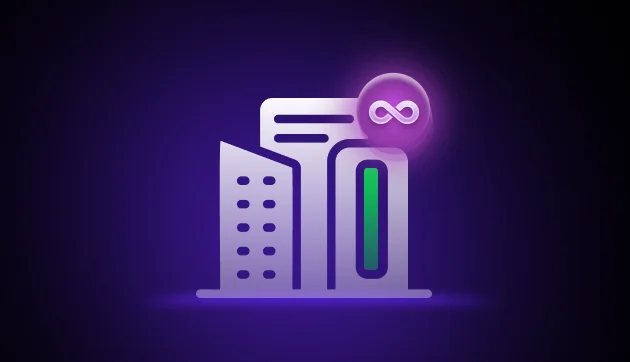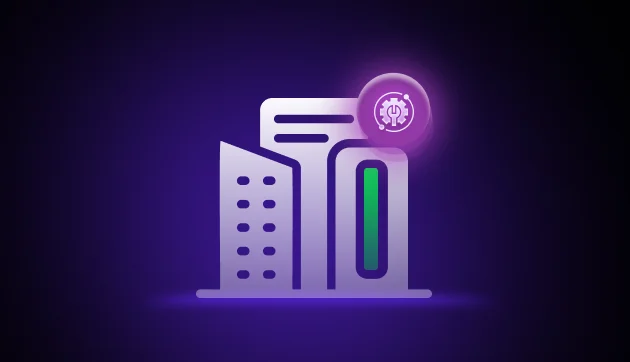
In 2025, Java development will remain a cornerstone of India’s IT industry. However, the field is marked by intense competition due to a growing talent pool and the language’s widespread adoption. Out of approximately 27 million developers worldwide, nearly 8 million specialize in Java.
Leading job portals like Naukri.com consistently list over 100,000 Java developer job openings, indicating both high demand and a large pool of applicants.
So are you still wondering why some candidates land interviews within days while others don’t hear back at all?
The answer often lies in a place most overlooked: your resume.
Your resume isn’t just a list of skills and tools. It’s your first technical pitch, your elevator story, and often the reason you get shortlisted or skipped.
In this blog, we’ll break down what makes a resume actually work with actionable Java developer resume tips – what recruiters look for and how you can structure yours to stand out in a competitive field. Whether you’re a fresher or someone with 3+ years of experience, this guide will help you refine and rebuild your resume with clarity and confidence.
Table of contents
- Who is a Java Developer?
- What Java Developers Typically Do
- Skills They Bring to Organizations
- Common Resume Mistakes Made by Java Developers
- Lack of Specificity
- Ignoring Achievements, Focusing Only on Tasks
- Failing to Demonstrate Projects and Tools
- Misusing the Summary Section
- Overlooking Version Control and Deployment Experience
- Must-Have Sections in a Java Developer Resume
- Why the Job Description Matters?
- Now, let’s break down the essential sections and how to make each one count:
- Header + Contact Information
- Technical Skills
- Work Experience
- Projects (for freshers and professionals alike)
- Education
- Certifications (optional but valuable)
- Java Developer Resume Tips for Freshers
- Technical Skills First
- Academic Projects (Highlight What You Built)
- Certifications (Bonus Points if They're Verified)
- Internships or Online Training (No Matter How Small)
- Soft Skills That Add Value
- GitHub or Portfolio (Optional, But Impactful)
- Final Thoughts
- FAQs
- How to create a resume for a Java Developer?
- What makes a good Java Developer?
- What is a good summary for a Java Developer resume?
- How do I show Java skills on my resume?
Who is a Java Developer?
A Java Developer is a software professional who builds, tests, and maintains applications using Java programming. From developing Android apps to building large-scale enterprise systems, their role is pivotal across industries that rely on scalable and secure backend solutions.
What Java Developers Typically Do
Java developers wear multiple hats depending on the domain they work in. A few key responsibilities include:
- Designing and developing robust backend logic for web and desktop applications
- Building APIs and microservices for system integration
- Debugging and optimizing application performance
- Writing unit and integration tests for reliability
- Collaborating with front-end teams and DevOps engineers for seamless deployment
In fintech, they might be building secure transaction systems; in healthcare, patient management tools; and in e-commerce, scalable order processing systems.
Skills They Bring to Organizations
Java developers bring a mix of technical and problem-solving skills that are highly valued across tech teams. These typically include:
- Proficiency in Core Java, Spring Boot, Hibernate, and RESTful APIs
- Understanding of databases like MySQL, PostgreSQL, or MongoDB
- Familiarity with tools like Git, Maven, Jenkins, and Docker
- Strong grasp of OOP concepts and clean code practices
- Critical thinking and collaborative development in Agile teams
In short, Java developers are the architects behind many of the systems we use daily.
Common Resume Mistakes Made by Java Developers
AI-generated templates, overly designed formats, and resumes stuffed with technical jargon might look impressive. But none of it truly matters if your resume doesn’t communicate what you can do and what you’ve done.
Recruiters don’t have time to decode resumes. They want relevance, clarity, and impact. Unfortunately, many Java developers fall into avoidable traps that keep their resumes from getting cut.

Here are a few common mistakes that hurt your chances:
1. Lack of Specificity
Generic statements like “Built Java applications” or “Worked on software projects” don’t tell recruiters anything useful. A resume should show exactly what you did and what you achieved.
What not to do:
“Developed applications in Java.”
What to do instead:
“Developed a payment integration module using Java and Spring Boot, reducing transaction failures by 25%.”
Why this matters:
Specificity reflects clarity of thought and shows the recruiter the impact of your work, not just the tools you used.
2. Ignoring Achievements, Focusing Only on Tasks
Listing only responsibilities without highlighting results is a missed opportunity. Recruiters are more interested in the outcomes than the daily duties.
What not to do:
“Involved in backend development using Java and MySQL.”
What to do instead:
“Redesigned backend logic using Java and optimized MySQL queries, improving API response time by 40%.”
Why this matters:
Hiring managers want to know how your contributions made a difference. Metrics and outcomes elevate your profile significantly.
3. Failing to Demonstrate Projects and Tools
Especially for entry-level or intermediate developers, showing relevant projects and tools is essential. Yet, many resumes simply list Java without proof of practical application.
What not to do:
“Java, Spring Boot, Hibernate, SQL” under skills section, with no project context.
What to do instead:
“Built a task management web app using Java, Spring Boot, and Hibernate. Implemented user authentication, CRUD operations, and role-based access.”
Why this matters:
Real-world project examples demonstrate hands-on experience and give context to your technical skills.
4. Misusing the Summary Section
The summary is your elevator pitch, not a buzzword dump. Many developers either copy-paste generic summaries or overload them with irrelevant terms.
What not to do:
“Motivated team player with passion for cutting-edge technologies and a dynamic attitude towards innovation and synergy.”
What to do instead:
“Java developer with 3 years of experience building RESTful APIs and scalable microservices using Spring Boot. Passionate about writing clean code and solving performance bottlenecks.”
Why this matters:
Your summary should set the tone for the rest of the resume. Keep it clear, focused, and aligned with the job role.
5. Overlooking Version Control and Deployment Experience
In today’s workflows, Git and CI/CD aren’t optional. Yet many resumes fail to mention these, giving the impression of outdated or incomplete skill sets.
What not to do:
Leaving out any mention of Git, CI/CD tools, or cloud platforms.
What to do instead:
“Used Git for version control, collaborated on team branches, and automated deployment with Jenkins pipelines for staging and production.”
Why this matters:
Version control and deployment experience show you’re comfortable in a real-world development environment. It adds credibility and makes you job-ready.
Must-Have Sections in a Java Developer Resume
Golden rule: Always follow reverse chronological order and read the job description thoroughly.
Why? Because we’ve moved far beyond the days when hiring managers manually screened every resume.
Today, Applicant Tracking Systems (ATS) conduct the first round of screening, and they don’t care how passionate you are unless it aligns with the job description.
Why the Job Description Matters?
Most job seekers make this classic mistake: the job posting says “Experience with Spring Boot microservices,” and their resume talks about “Built web apps using Java frameworks.”
That may seem like it means the same thing to a human reader. But to an ATS, it doesn’t match.
Despite being proficient in the skill, your resume might fail to register because you didn’t mirror the exact keywords or phrasing used in the job description.
Tip: Your resume should act like a direct answer sheet to the job post. Not a generic declaration.
Now, let’s break down the essential sections and how to make each one count:
1. Header + Contact Information
- Include your full name, phone number, professional email ID, and LinkedIn/GitHub links.
- Avoid putting unnecessary details like full address or photo.
Example:
Rahul K
Java Backend Developer
📧 [email protected] | 📞 +91-XXXXXXXXXX
GitHub: github.com/rahul-java | LinkedIn: linkedin.com/in/rahul001
2. Professional Summary / Career Objective
- This is not the place for fluffy adjectives.
- Focus on years of experience, core technologies, and what you bring to the role.
Example:
Java developer with 4+ years of experience building scalable REST APIs and enterprise-level applications using Spring Boot and Hibernate. Skilled in performance tuning and microservices architecture.
3. Technical Skills
- Organize them into subcategories: Languages, Frameworks, Tools, Databases.
- Match the skills in the job description—word for word, where possible.
Example:
Languages: Java, SQL, JavaScript
Frameworks: Spring Boot, Hibernate, JUnit
Tools: Git, Maven, Jenkins
Databases: MySQL, MongoDB
Cloud/DevOps: Docker, AWS EC2
4. Work Experience
- Follow reverse chronological order.
- For each role, mention your contributions, the technologies used, and the outcome.
- Use metrics where possible.
What to include:
- Job title
- Company name + location
- Duration
- Bullet points (action-oriented + impact-driven)
Example:
Java Backend Developer
Tata Consultancy Services, Bangalore
Jan 2021 – Present
- Built REST APIs using Spring Boot for a financial application serving 1M+ users
- Integrated OAuth2-based user authentication, improving login success rate by 30%
- Collaborated with frontend and QA teams, reducing development cycle by 20%
5. Projects (for freshers and professionals alike)
- Highlight personal, freelance, or academic projects that demonstrate your Java expertise.
- Provide a brief description, tech stack, and outcome.
Example:
E-Commerce Web App
Tech stack: Java, Spring Boot, Thymeleaf, MySQL
- Developed cart, order management, and payment modules
- Implemented product search and filters, improving user experience and speed
6. Education
- Mention degree, college, and graduation year.
- Add coursework or achievements if relevant.
Example:
B.Tech in Computer Science
VIT University, Chennai | 2019
CGPA: 8.6/10
7. Certifications (optional but valuable)
- Include Java-specific or cloud/devops certifications to show initiative.
Example:
Oracle Certified Professional: Java SE 11
AWS Certified Developer – Associate
Java Developer Resume Tips for Freshers
We get it. As a fresher, building a resume that stands out can feel like chasing a moving target. Most resumes at this stage get overlooked, not because you lack potential, but because your resume doesn’t speak the language recruiters and ATS tools are trained to understand.
But here’s the good news: a fresher’s resume can find its way when structured with intention, clarity, and alignment with what hiring teams actually look for.

If you’re a beginner in Java development, here’s how to craft a resume that’s not just ATS-friendly, but also recruiter-approved.
1. Technical Skills First
A long paragraph stating how “motivated” or “hardworking” you are isn’t going to get you shortlisted. What matters is: what can you work with, and how comfortably?
What to include:
- Programming: Java, OOPs concepts, SQL, basic HTML/CSS, JavaScript
- Tools: Eclipse or IntelliJ, Git
- Frameworks (if learned): Spring Boot, Hibernate
Example Format:
Technical Skills
Languages: Java, SQL, HTML, CSS, JavaScript
Tools: Git, Eclipse, IntelliJ IDEA
Frameworks: Spring Boot (beginner), Hibernate (beginner)
2. Academic Projects (Highlight What You Built)
This is your playground to prove you can apply what you’ve learned. Recruiters care less about the project size and more about what you did, how you did it, and which tools you used.
Structure to follow:
- Project Title
- Technologies Used
- Short Description (1–2 lines on functionality and your role)
Example:
Library Management System
Java, MySQL, Swing
Built a desktop application to manage library records with CRUD operations. Designed UI and implemented database integration using JDBC.
3. Certifications (Bonus Points if They’re Verified)
Even self-paced learning counts if it’s from credible platforms.
What to include:
- Course name
- Platform (Coursera, Udemy, Oracle Academy, etc.)
- Completion date (optional)
Example:
- Java Programming and Software Engineering Fundamentals – Coursera
- Spring Framework – Udemy
4. Internships or Online Training (No Matter How Small)
A 4-week online internship or virtual training program still demonstrates initiative and interest.
Example:
Java Intern – CodeRize Virtual Internship (Jan 2025 – Feb 2025)
Completed tasks on Java backend development, wrote API endpoints using Spring Boot, and participated in code reviews.
5. Soft Skills That Add Value
Yes, soft skills matter – especially in collaborative environments. But keep it honest and crisp.
Recommended:
- Problem-solving
- Communication
- Team collaboration
- Willingness to learn
Avoid laundry lists. Focus on skills you’ve practiced in real situations (college projects, group tasks, etc.).
6. GitHub or Portfolio (Optional, But Impactful)
If you have even a couple of small projects, upload them to GitHub and include the link in your resume. This adds authenticity and gives recruiters something to explore.
Example:
Portfolio: github.com/yourusername
Your fresher resume is not meant to show years of experience. It’s meant to show potential. Structure it in a way that reflects what you’ve learned, what you’ve built, and what you’re ready to do. When done right, that’s more than enough to earn an interview.
If you’re serious about applying the resume tips you just learned, the next step is mastering the skills that make you stand out. HCL GUVI’s Java Full Stack Development Course gives you hands-on training in both front-end and back-end tools – HTML, CSS, JavaScript, Spring Boot, Hibernate, and more. It’s designed to help you become a job-ready full-stack Java developer, opening doors to high-growth roles in cloud, DevOps, and beyond in 2025.
Final Thoughts
As much as the demand for Java developers is soaring, the probability of landing a job is getting lower and lower. A solid, structured resume is your golden ticket to your dream job.
It’s not just about listing what you know, but about presenting it in a way that aligns with what recruiters and ATS systems are scanning for. From showcasing relevant skills and tools to highlighting real-world projects and writing clear, results-focused summaries, every section matters.
Your resume is the first filter you pass through. Make sure it speaks, confidently, and convincingly.
FAQs
1. How to create a resume for a Java Developer?
Structure your resume in reverse chronological order, tailor it to the job description, highlight Java projects, relevant tools, and frameworks, and ensure it’s ATS-friendly with clear formatting.
2. What makes a good Java Developer?
A good Java Developer combines deep knowledge of core Java, frameworks like Spring, problem-solving ability, clean coding habits, and strong collaboration skills across development, testing, and deployment phases.
3. What is a good summary for a Java Developer resume?
“Detail-oriented Java Developer with hands-on experience in building scalable applications using Java, Spring Boot, and REST APIs. Strong understanding of object-oriented principles, eager to solve real-world problems.”
4. How do I show Java skills on my resume?
List Java and related frameworks in your technical skills section, describe how you used them in projects, and link to code samples or GitHub to prove practical expertise.




































Did you enjoy this article?